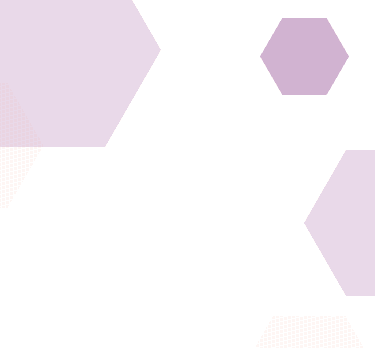Provo Cardiology
As the largest practicing group of cardiologists in Utah County, Revere Health Provo Cardiology offers a comprehensive range of treatments and services to residents not found anywhere else. Our board-certified cardiologists and healthcare providers take time to listen to and work with patients to help them fully understand their cardiovascular care options. We aim to provide comprehensive, high-quality, and cost-effective cardiovascular treatment for all heart-related conditions, including heart attack, atrial fibrillation, heart murmur, heart disease, congestive heart failure, and more. We hold ourselves to the highest standards of excellence in patient care, communication, and compassion.

Information Cards
Phone: (801) 373-4366
Fax: (801) 429-8191Monday - Friday:
8:00 am to 5:00 pmSee patient education
resources below ↓
Services
Diagnostic Cardiac Catheterization
Learn About Diagnostic Cardiac CatheterizationThe process of introducing catheters into veins or arteries, then into either the left or right side of the heart.
Diagnostic Peripheral Angiography
Learn About Diagnostic Peripheral AngiographyA test that uses X-rays and dye to find narrowed or blocked areas in the arteries that supply blood to your legs.
Interventional Services
Learn About Interventional ServicesThis is a branch of cardiology that focuses on catheter-based treatment of structural heart diseases, including angioplasty and stent.
Angioplasty/Stent
Learn About Angioplasty/StentThis opens the coronary arteries that supply blood to the heart. A stent is a tube that expands inside the coronary artery.
Atherectomy
Learn About AtherectomyThis surgery treatment uses a catheter with a sharp blade to remove plaques of fatty material from blood vessels.
Peripheral Angioplasty
Learn About Peripheral AngioplastyThe blocked area of the peripheral artery is removed through an inflated balloon within a catheter.
PFO and ASD Closures
Learn About PFO and ASD ClosuresA catheter-based closure of the patient foramen ovale (PFO) and atrial septal defect (ASD).
Retrievable IVC Filters
Learn About Retrievable IVC FiltersThese are small, cage-like devices inserted into the inferior vena cava in order to capture blood clots.
Electrophysiology Services
Learn About Electrophysiology ServicesA specialty branch of physiology concerned with the study, diagnosis and treatment of heart rhythm disorders.
Ablation
Learn About AblationA procedure used to scar or destroy a small area of tissue in the heart that is causing abnormal rhythm.
Pacemaker Implantation
Learn About Pacemaker ImplantationA generator is placed on the left side of the chest, attached to a wire guided through a blood vessel to the heart.
ICD-Defibrillator Implantation
Learn About ICD-Defibrillator ImplantationThis is a pager-sized device placed into the heart ventricles to help your heart keep beating effectively.
Pacemaker Lead Extraction
Learn About Pacemaker Lead ExtractionLead extraction through the femoral or subclavian vein.
Laser Lead Extraction
Learn About Laser Lead ExtractionSpecial catheter-guided lasers help free the lead from the surrounding scar tissue.
Tilt Table Testing
Learn About Tilt Table TestingPatients lie on a table that is slowly tilted upward, used to measure blood pressure, heart rate and gravity’s effect on the heart.
Emergency Inpatient Coverage
Learn About Emergency Inpatient CoverageAdmission to the hospital with a doctor’s order based on need of emergent, time-sensitive services.
Echocardiography
Learn About EchocardiographyUltrasound waves are used to examine the functionality of the heart and diagnose heart diseases and disorders.
Stress Echocardiography
Learn About Stress EchocardiographyA procedure measuring heartbeat and blood pressure while exercising to determine the health of the heart and blood vessels.
TEE
Learn About TEETransesophageal echocardiography is a test used to produce ultrasonic imaging of the heart to better diagnose disorders.
Holter Monitor and Event Recording
Learn About Holter Monitor and Event RecordingA small battery-operated device that is used to record the heart’s activity for those who have irregular cardiac symptoms.
Pacemaker Programming
Learn About Pacemaker ProgrammingYour doctor will determine if demand pacing or rate-responsive pacing is a better fit for your needs.
Exercise Treadmill
Learn About Exercise TreadmillAn exercise test on the treadmill is a way to test the effect of exercise on your heart and your ability to breathe.
Venous Ablations
Learn About Venous AblationsTreatment using laser energy to close varicose veins in the legs. It leaves no scars and relieves aches and pains.
Nuclear Diagnostic Imaging
Learn About Nuclear Diagnostic ImagingRadioactive tracers are used to detect radiation the body. Digital images are generated and used to make a diagnosis.
Cardiovascular Perfusion
Learn About Cardiovascular PerfusionCirculation equipment provides support to a patient’s circulatory or respiratory functions in certain heart procedures.
Bone Scan
Learn About Bone ScanA scan that screens for damage in the bones, the spread of cancer and potential bone infections and trauma.
In-Office Lab Services for Cholesterol and Anticoagulation
Learn About In-Office Lab Services for Cholesterol and AnticoagulationLab tests look at the blood’s ability and time it takes to clot, along with lipid levels related to cholesterol.
HIDA Scan
Learn About HIDA ScanA hepatobiliary scan captures images of the liver, gallbladder and bile ducts to help diagnose medical conditions.
Cardiac MRI
Learn About Cardiac MRIA simple imaging procedure using radio waves and magnets to capture detailed pictures of the heart and blood vessels.
CT Coronary Calcium Score
Learn About CT Coronary Calcium ScoreA heart scan that calculates your risk of developing coronary artery disease, a common heart condition.
Ambulatory Blood Pressure Monitoring
Learn About Ambulatory Blood Pressure MonitoringA non-invasive method of obtaining blood pressure readings while the patient is in their own environment.
Ankle-Brachial Index Testing
Learn About Ankle-Brachial Index TestingThis is the ratio of the blood pressure at the ankle to the blood pressure in the upper arm (brachium).
More about value-based care










